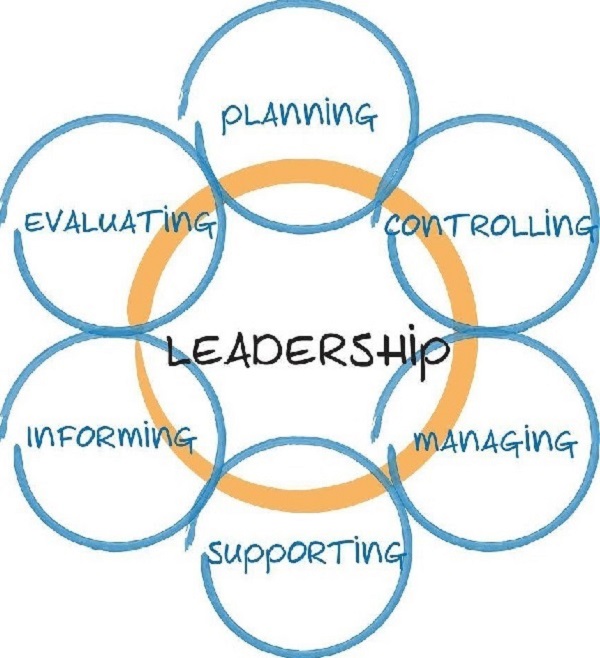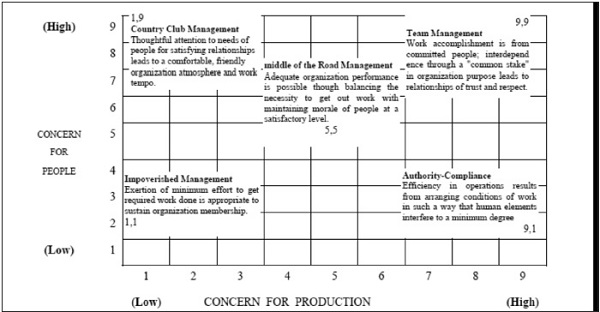
- Management Principles - Home
- Management - Overview
- Management - Role Of Managers
- The P-O-L-C Framework
- Management - Ecosystem
- Management - Environment
- Management - Factors Affecting
- Management - Organization
- Management - Leadership Styles
- Management - Framework
- Mission,Vision and Values
- Personalty and Attitude
- Work Attitude and Behaviour
- Decision Making
- Decision Making Nature Significance
- Factors Affecting Decision Making
- Decision Making - Styles
- Decision Making - Tools
- Management - Planning
- Planning - Introduction
- Types Of Plans
- The Planning Environment
- Organizational Structure
- Importance Of Organizing
- Principles Of Organizing
- Organizational Structure
- Organizational Process
- Change Management
- Organizational Change
- Organizational Change Factors
- Organizational Change Management
- Globalization and Its Effect
- Multinational Organizations
- Global Ecosystem and its Impact
- Management Useful Resources
- Management - Quick Guide
- Management - Useful Resources
- Management - Discussion
Management Principles - Leadership Styles
Management philosophy is the manager's set of personal beliefs and values about people and work. It is something that the manager can control. Eminent social psychologist and management researcher, Douglas McGregor, emphasized that a manager's philosophy creates a self-fulfilling prophecy. Theory X managers treat employees almost as children who need constant direction, while Theory Y managers treat employees as competent adults capable of participating in work-related decisions.
These managerial philosophies then have a subsequent effect on employee behavior, leading to the selffulfilling prophecy. As a result, organizational and managerial philosophies need to be in harmony.
The Many Aspects of Leadership
The character of top executives and their philosophy have an important influence on the extent to which authority is decentralized.
Sometimes top managers are dictatorial, tolerating no interference with authority and information they hoard. Conversely, some managers find decentralization a means to make large business work successfully.
The number of coworkers involved within a problemsolving or decisionmaking process reflects the manager's leadership style.
Empowerment means sharing information, rewards and power with employees so that they are equal contributors to the organizations outcomes.
An empowered and well-guided workforce may lead to heightened productivity and quality, reduced costs, more innovation, improved customer service, and greater commitment from the employees of the organization.
Each business must go through the process of identifying its individual management philosophy and continuously review and evaluate the same to see if it is aligned with its larger purpose.

Leadership Styles
Leadership can be stated as the ability to influence others. We may also define leadership as the process of directing and influencing people so that they will strive willingly and enthusiastically towards the achievement of group objectives.
Ideally, people should be encouraged to develop not only willingness to work but also willingness to work with confidence and zeal. A leader acts to help a group achieve objectives through the exploitation of its maximum capabilities.
In the course of his survey of leadership theories and research, Management theorist, Ralph Stogdill, came across innumerable definitions of leadership.
Qualities/Ingredients of Leadership
Every group of people that perform satisfactorily has somebody among them who is more skilled than any of them in the art of leadership. Skill is a compound of at least four major ingredients −
The ability to use power effectively and in a responsible manner.
The ability to comprehend that human beings have different motivation forces at different times and in different situations.
The ability to inspire.
The ability to act in a manner that will develop a climate conducive to responding and arousing motivation.
Leadership styles/types can be classified under the following categories −
Leadership Style Based on the Use of Authority
The traditional way of classifying leadership is based on the use of authority by the leader. These are classified as −
| Autocratic leadership | Democratic leadership | Free-rein leadership |
|---|---|---|
| Use of coercive power to give order and expect compliance. Dogmatic and leads by the ability to withhold or give punishment or rewards, commands and expects compliance. | Participative leader who usually consults with subordinates on proposed actions and decisions, and encourages participation from them. | As opposed to autocratic leadership, this leadership style provides maximum freedom to subordinates. |
Some autocratic leaders happen to be benevolent autocrats, willing to hear and consider subordinates ideas and suggestions but when a decision is to be made, they turn to be more autocratic than benevolent. |
Ranges from the person who does not take action without subordinates concurrence to the one who makes decisions but consults with sub-ordinates before doing so. | Favors autonomy and exercises minimal control. Gives workers a high degree of independence in their operations. |
Leadership Continuum
Propounded by Robert Tannenbaum and Warren H. Schmidt, according to the Leadership Continuum, leadership style depends on three forces: the manager, employees and the situation.
Thus, instead of suggesting a choice between the two styles of leadership, democratic or autocratic, this approach offers a range of styles depicting the adaptation of different leadership styles to different contingencies (situations), ranging from one that is highly subordinate-centered to one that is highly boss-centered.
Features of Leadership Continuum
The characteristics of individual subordinates must be considered before managers adopt a leadership style.
A manager can be employee-centered and allow greater freedom when employees identify with the organizations goals, are knowledgeable and experienced, and want to have decision making responsibility.
Where these conditions are absent, managers might need to initially adopt a more authoritarian style. As employees mature in self-confidence, performance and commitment, managers can modify their leadership style.
Leadership Styles in Managerial Grid
Developed by Robert Blake and Jane Mouton, this approach as shown in the following grid, has two dimensions −
Concern for people which includes such elements as provision of good working conditions, placement of responsibility on the basis of trust rather than concern for production.
Concern for production includes the attitudes of a supervisor toward a wide variety of things, such as quality of staff services, work efficiency, volume and quality of output, etc.
The bi-dimensional managerial grid identifies a range of management behavior based on the various ways that task-oriented and employee-oriented styles (each expressed as a continuum on a scale of 1 to 9) can interact with each other.

-
Management Style 1,1 −
Impoverished management with low concern for both people and production.
This is called laissez-faire management because the leader does not take a leadership role.
Also known as delegative leadership is a type of leadership style in which leaders are hands-off and allow group members to make the decisions.
-
Management Style 1,9 −
Country club management having high concern for employees but low concern for production.
These leaders predominantly use reward power to maintain discipline and to encourage the team to accomplish its goals.
-
Management Style 5,5 −
Middle of the road management with medium concern for production and for people.
Leaders who use this style settle for average performance and often believe that this is the most anyone can expect.
-
Management Style 9,1 −
Authoritarian management with high concern for production but low concern for employees exercising disciplinary pressure.
This approach may result in high production but low people satisfaction levels.
-
Management Style 9,9 −
Democratic management with high concern for both production, and employee morale and satisfaction.
The leader's high interest in the needs and feelings of employees affects productivity positively.
This theory concluded that style 9,9 is the most effective management style as this leadership approach will, in almost all situations, result in improved performance, low turnover and absenteeism, and high employee satisfaction.
Systems of Management
Professor Rensis Likert of Michigan University studied the patterns and styles of managers and leaders for three decades. He suggests four styles of management, which are the following −
-
Exploitative-authoritative management −
Managers are highly autocratic, showing little trust in subordinates.
The prime drivers are motivating people through fear and punishment.
Managers engage in downward communication and limit decision making to the top.
-
Benevolent-authoritative management −
The manager has condescending confidence and trust in subordinates (master-servant relationship).
Management uses rewards and upward communication is censored or restricted.
The subordinates do not feel free to discuss things about the job with their superior. Teamwork or communication is minimal and motivation is based on a system of rewards.
-
Consultative management −
Managers have substantial but not complete confidence and trust in subordinates.
Use rewards for motivation with occasional punishment and some participation, usually try to make use of subordinates' ideas and opinions.
Communication flow is both up and down.
Broad policy and general decisions are made at the top while allowing specific decisions to be made at lower levels and act consultatively in other ways.
-
Participative management −
Managers have trust and confidence in subordinates.
Responsibility is spread widely through the organizational hierarchy.
Some amount of discussion about job-related issues take place between the superior and subordinates.
Likert concluded that managers who applied the participative management approach to their operations had the greatest success as leaders.